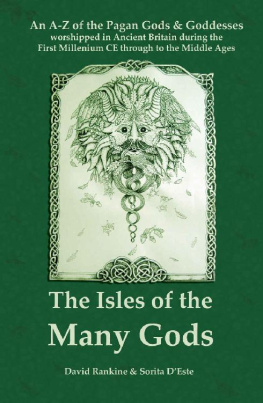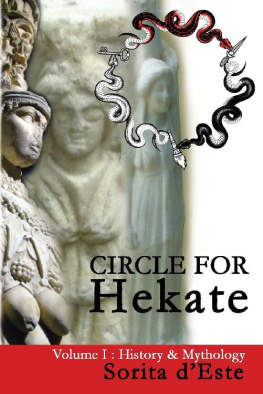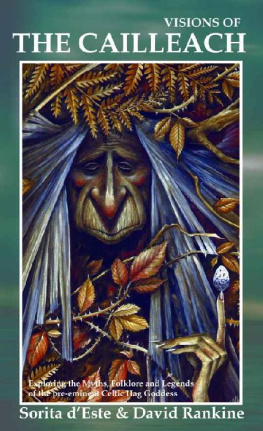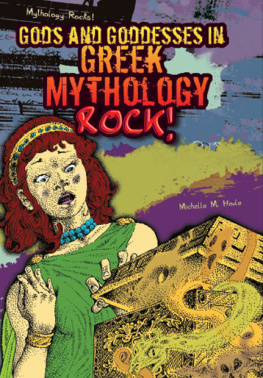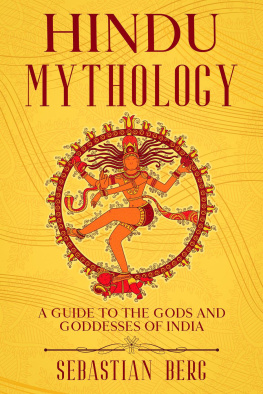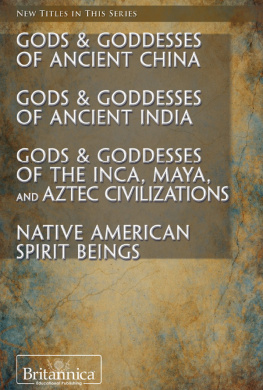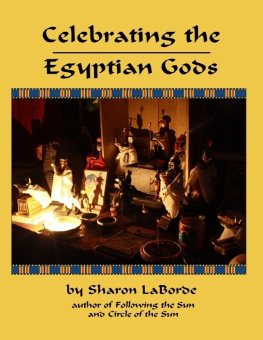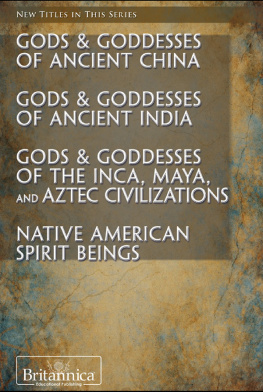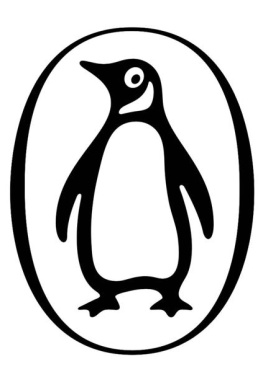Sorita dEste and David Rankine are internationally recognized fortheir research and writing on mythology, spirituality and magickal practices ofboth ancient and modern times. They have collaborated on a number of projectsin the past, including The Guises of the Morrigan and Circle ofFire. Between them they have authored more than a dozen books, sometimesworking with other authors with expertise in a particular area. In addition tobooks, Sorita and David have also contributed many articles to magazines,journals and websites over the years. Notably they were major contributors tothe very successful dAgostini Enhancing Your Mind Body Spiritpartwork.
Authors Foreword
This book was a labour of love both in that we felt the need forsuch a book for use by those interested in the Gods and Goddesses worshiped andcelebrated by our ancestors in Ancient Britain, but also because we enjoyeddoing the research so much! In fact, though this is true to a certain extentfor all projects we work on, we found it very difficult to stop adding newinformation and rewriting parts of this volume more than we have ever done withany book we have worked on in the past. So much so that it was more than sixmonths late in going to print and contains around 30 more deities than it didwhen we first thought it was all done!
This book looks at the deities which were worshipped in the BritishIsles during the first millennium through to the Middle Ages. These include indigenousGods and Goddesses, as well as many foreign ones which immigrated to theseisles with waves of invading cultures. It is also worth considering thatthough we think of Christianity as being a religion which has been the dominantEuropean religion for fifteen hundred years now it was slow at taking root inthese isles and existed for many centuries alongside the older Pagan religionsand practices.
Many of the Gods and Goddesses included in this book are immigrantdeities who came to the British Isles from other parts of the world. This bookis concerned only with the known evidence for their worship in the British Isles and as such we have not included details of their worship or the way in whichthey were viewed other than this. This should be kept in mind when readingthrough the entries of deities that originate in other parts of the world.
It is our hope that the information we have brought together in thisvolume will help provide inspiration for those readers who are interested inexploring the historical spiritual traditions of the British Isles in moredepth. Throughout you will find footnotes and at the end a completebibliography of all the materials we consulted whilst compiling this volume. We hope that this will help provide points of reference for those wishing toexplore a particular subject in further depth.
We would like to express our special thanks for help with theresearch of this project to the staff at the British Library (London),for their patience and assistance. Also the staff at Abergavenny PublicLibrary for their help during the final stages of our research, forproviding assistance in finding specific works and a haven of quiet during thechaos during our house move in the Autumn of 2006. Thank you.
Thank you also to Phil and Tracy Bartlett from Stagman Creationsfor their kind permission to use their image Lord of the Greenwood forthe cover of this book. To find out more about their work and to purchaseprints of Lord of the Greenwood visit their website www.stagmancreations.co.uk
We hope that you find the information here interesting and that itwill in turn inspire others to continue the work of looking at the spiritualheritage of these magical isles.
Sorita dEste & David Rankine
Monmouthshire, Wales
December 2006
Authors Notes
1. Evidence For Inclusion
The source material available defines the scope of any work. Whenwriting this book we drew from two distinct categories of material,archaeological and literary.
The archaeological evidence can be described as follows:
Roman inscriptions found throughout Britain (the RIB),
Stonework, including statues, friezes and sculptures,
Jewellery, including amulets and talismans
Curse tablets (defixiones ),
Votive offerings ,
Military equipment such as swords, shields and helmets,
Currency (coins),
Miscellaneous items depicting deities such as caskets or sceptres,
Place names, including the names of rivers and towns.
The literary evidence covers a period of around seventeen hundredyears and comes from a number of different cultural groups. Much of thisliterature was written by the dominant military and religious powers and so acultural bias is inevitable in such writings, which must therefore be seen asrepresentative evidence rather than absolute fact.
The literature can be categorised as follows:
Early classical writings by Roman and Greek writers from the periodfirst century BCE to the third century CE, which ranged from neutral reportssuch as Ptolemy s Geography to hostile bias such as in Julius Caesar s Gallic Wars .
Saxon Christian writings from the seventh to the eleventh centuryCE. These range from religious texts to biographies to leech-books (books ofcharms and herbals).
Celtic Christian writings from the fifth to the seventeenth centuryCE, from Ireland and Wales. This is the broadest corpus of material, which islargely recording of myths and folk tales, and also includes genealogies. Thestyle of these works ranges from favourable to hostile and belittling.
Icelandic writings on the Germanic gods, i.e. the thirteenth centuryCE Eddas .
2. The Argument For Divinity
When considering deities it is inevitable that one must considertheir origins in order to understand both their existence and purpose. Thisthen leads to questions in regards to the different types of deity, as well ascriteria for when a god becomes a god. In some pantheons this is easier to distinguishthan in others.

